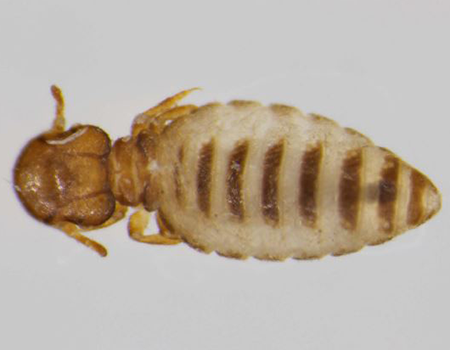Chewing Lice in Horses

An 18-month-old horse was found dead and was submitted for necropsy to the Animal Health Diagnostic Center. The horse was seen by an attending veterinarian a few days earlier when it was weak with a history of extreme weight loss over six weeks. A fecal exam performed ante mortem by the attending veterinarian reported 8,080 strongyle eggs per gram (EPG) and Parascaris sp. at 163 EPG. The horse body score was 3/5 on the Henneke scale. Large numbers (> 100,000) of small strongyles were found in the intestinal lumen and encysted larvae were noted in the ileum and cecum covering almost the entire surface of the mucosa. Gastrophilus intestinalis (bots) were found in the stomach. Chewing lice, Bovicula equi, were found throughout the animal's haircoat. The horse also had been moderately deficient in selenium.
A pasture mate, less than two years of age, was also exhibiting acute weight loss, low total protein (both albumin and globulin) and despite aggressive supportive care died a few days after the first horse died. No information was available on deworming history.
Cyathostomiasis is seen from October to April in temperate climates and frequently in late winter. Acute weight loss, intermittent colic, fevers, low total protein, and negative fecals may be seen. Horses may continue eating despite presenting signs. Differentials include Salmonella and Lawsonia intracellularis (mostly seen in late weanlings). Inadequately dewormed horses, particularly young horses (less than 2.5 years) are susceptible to cyathostomiasis. Parasite resistance may contribute to deworming failure.
Treatment is often unsuccessful, and animals die within days of presenting with signs. Preventive measures include testing for emerging parasite resistance by doing a fecal egg count reduction test (FECRT). Deworming young stock more frequently with products known to be effective where the horse is stabled or has been stabled is important. See the AAEP Parasite Control Guidelines for more information. Poor management, young age and parasitism were the major contributing factors to the death of these two horses.


